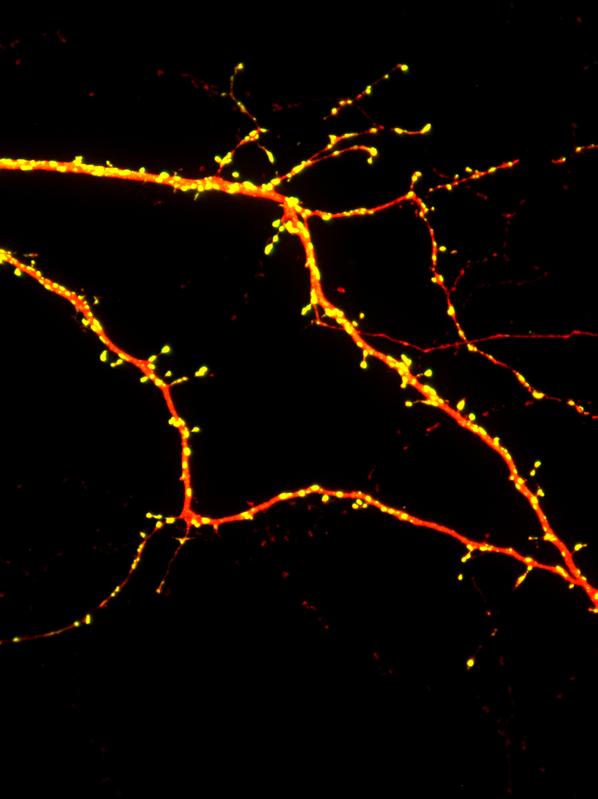In Rain Man's Synapses: Molecular consequences of autism-related mutations in the SHANK3 gene elucidated
An international team of researchers led by Dr. Michael R. Kreutz and Dr. Marina Mikhaylova from the Leibniz Institute for Neurobiology Magdeburg (LIN), the Center for Molecular Neurobiology Hamburg (ZMNH) and Humboldt University Berlin, and Dr. Eunjoon Kim from the Korean Advanced Institute of Science and Technology (KAIST) has deciphered the molecular effects of mutations in the autism risk gene SHANK3. The project was competitively funded by the Leibniz Association and has been published in the journal Elife.
In the 1988 road movie "Rain Man," Dustin Hoffman in one of his signature roles played the character of an insular autistic man, adapted from the life of the most famous savant, Kim Peek. Autism is a complex developmental brain disorder associated with peculiarities in the perception and evaluation of sensory stimuli. Autistic people find it difficult to communicate and interact socially with others, often take refuge in stereotypical behavior patterns, and sometimes have cognitive problems or insular gifts.
Genetic mutations may be involved in the development of autism. The gene products affected are important proteins in the brain's synapses, such as the SHANK3 molecule. SHANK3 is a scaffold protein that contains many binding sites for other proteins and acts as a kind of master organizer for the postsynaptic protein machinery: It links transmitter receptors, signaling molecules, and the cytoskeleton, and is indispensable for the precise working of excitatory synapses.
What impact do mutations found in autistic patients have on how the SHANK3 protein functions? Michael Bucher, a doctoral student in the research groups of Kreutz and Mikhaylova, worked closely with Kim's lab at the South Korean Advanced Institute of Science and Technology to rebuild the defective proteins for two of these mutations using genetic engineering and structural analysis. Using biophysical techniques, the research team was able to demonstrate that the mutations lead to changes in the three-dimensional protein structure that have far-reaching consequences: The mutated SHANK3 proteins enter the synapses to a lesser degree, which disrupts synaptic protein complexes and function.
"We were able to see that the mutations altered SHANK3 so that it could no longer organize the order and dynamics of proteins in excitatory synapses. This gave us a molecular deciphering of why patients carrying these mutations experience disruptions in synaptic connections that could be responsible for cognitive symptoms, for example", said Michael Bucher, first author of the study. The next step will now be to study the mutant autism risk proteins in mice to directly analyze the effects on behavior.
Wissenschaftlicher Ansprechpartner:
Dr. Michael Kreutz, michael.kreutz@lin-magdeburg.de
Originalpublikation:
https://elifesciences.org/articles/66165
Die semantisch ähnlichsten Pressemitteilungen im idw



